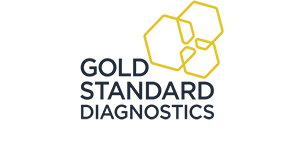NovaLisa Clostridium tetani toxin 5S IgG, quantitative, ELISA Kit
Clostridium tetani toxin 5S IgG, quantitative, ELISA Kit
SKU
NOVTETG5043
Packaging Unit
96 Tests
Manufacturer
Gold Standard Diagnostics
Availability:
loading...
Price is loading...
Clostridium tetani produces a potent biological toxin, tetanospasmin and is the causative agent of tetanus (lockjaw).These are large, Gram-positive rod-shaped, anaerobic bacteria about 1 µm thick and 3-8 µm in length, and its appearance on a gram strain resembles tennis rackets or drumsticks (see fig.). Clostridium tetani is found as spores in soil or as parasites in the gastrointestinal tract of animals.Clostridium tetani usually enters a host through a wound to the skin, it then replicates and germinates spores. Given anaerobic conditions, the pathogens produce two exotoxins, tetanolysin and tetanospasmin, which reaches the anterior horns of the spinal cord or brain stem via retrograde axonal transport. Tetanolysin serves no known function to Clostridium tetani, and the reason the bacteria produce it is not known with certainty. Tetanospasmin is a neurotoxin and causes the clinical manifestation of tetanus when it blocks inhibitory impulses, by interfering with the release of neurotransmitters, including glycine and gamma-amino butyric acid.The clinical picture is characterized by increased muscle tones and spasms induced by visual or acoustic stimuli. The cramps often begin in the facial musculature, and then spread to neck and back muscles. The patient remains lucid. Finally the paralysis of diaphragm and glottis causes death. In case the patient is immunized the tetanus is limited to the immediate surrounding of the injury and the lethality rate is much lower than with the general tetanus.Tetanus is now rare in developed countries due to widespread vaccination practice. The frequency of occurrence is much higher in developing or undeveloped countries. Worldwide, about 300.000 persons contract tetanus every year, with a lethality rate of approximately 50%.
| SKU | NOVTETG5043 |
|---|---|
| Manufacturer | Gold Standard Diagnostics |
| Manufacturer SKU | TETG5043 |
| Package Unit | 96 Tests |
| Quantity Unit | PAK |
| Shelf Life | 18 months |
| Specimen | Plasma, Serum |
| CE-IVD | yes |
| Product information (PDF) |
|
| MSDS (PDF) |
|

 Deutsch
Deutsch





